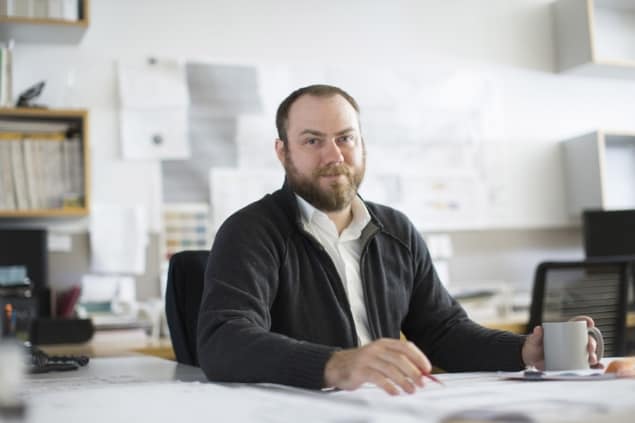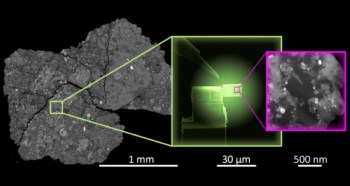
Think small, win big. That’s the mindset that Harvard University’s Laboratory for Integrated Science and Engineering (LISE) has, for a decade and more, tried to encourage by providing a focal point for cross-disciplinary collaboration in nanoscale science and technology. Underpinning that collective endeavour, and housed across three basement floors of the LISE building, is a suite of ultralow-vibration (ULV) facilities for scanning probe microscopy (SPM) – the engine-room, in every sense, of research breakthroughs spanning areas as diverse as high-temperature superconductivity, topological materials and advanced heterostructures.
Joseph Gibbons, principal at Wilson HGA, a Boston-based firm of architects specializing in science and technology facilities for academic and corporate clients, has been instrumental in developing LISE’s ULV capabilities, describing each new ULV lab as “a better version of the one that went before”. Here he talks to Physics World about Wilson HGA’s role in the design and commissioning of the latest ULV facility at LISE, as well as the complexities of research spaces for the study and control of exotic materials at the nanoscale.
Why are “quiet” environments so important for SPM?
It’s primarily a matter of resolution. By minimizing noise and vibration in the laboratory, scientists are able to push their SPM tools to the resolution limit, with that steady environment also enabling long-duration measurements – sometimes as long as several weeks. Unfortunately, many SPM facilities are located on metropolitan campuses with all manner of background noise from trains, subways, buses and trucks. My role as an architect is to counter these noise sources, while taking any inherent noise from the building – for example, due to elevators and air-conditioning units – out of the equation.
How do you create those stable lab conditions over the long term?
While ULV facilities have been around for decades, there are multiple schools of thought on the optimum relationship between the SPM and the base building. For the new ULV facility at LISE, we took vibration and acoustic measurements throughout the building during the initial design phase to identify sources that were eventually making their way into the lab.
From here, we designed backwards by setting benchmarking goals for a range of parameters such as resonance frequency of the plinth (the mass-inertia block on which the microscope sits), vertical natural frequencies, acoustic mitigation through redundant enclosures, and the prevention and control of infrasound (low-frequency sound at less than 20 Hz). Crucially, we were also willing to ditch design based on precedent and subjective paradigm in favour of “out-of-the-box” thinking.
In terms of the specifics, what does that out-of-the-box thinking look like?
Our design approach is based around three main goals. First, isolate the base building from the SPM plinth. Second, isolate the base building from the acoustic enclosure (the environment surrounding the plinth). And finally, isolate the plinth from the acoustic enclosure. This is a unique approach in that we have isolated the plinth from the acoustic enclosure, and both of these are isolated separately from the building in a kind of “Russian doll” configuration.

What approach are you using for isolation of the various building blocks of the lab?
Following requirements-gathering discussions with the scientific team, we selected passive isolation for this project, though there is still the option for active cancellation at the SPM instrument itself. Passive isolation depends on mass and, generally, higher mass yields higher performance. Our isolation set-up is completely passive, using pneumatic air springs and natural rubber.
What does that mean for active isolation?
We figure if we can get all of the ambient noise down below 1 Hz in the horizontal and vertical directions, any active isolation at the actual SPM instrument will not need to work very hard. Such active systems require low-voltage signaling between piezoelectrics which, whenever they feel a vibration, automatically generate a vibration of equal and opposite magnitude.
Designing lab space for cutting-edge materials research is an unusual niche for an architect. What attracted you to this specialism?
My background is in the fine arts and architecture, though there are parallels between the sciences and the work we do here at Wilson HGA. In architecture, for example, there’s always a problem that we’re trying to solve, or a thesis that we’re testing, in the course of the design process. That’s the same whether we’re designing a lab or an entire campus.
The secret in every case is to understand the end-user’s requirements for what constitutes an optimum operating environment for a given piece of kit. Often the things we focus on are never thought of by the scientists – for example, how to connect a vacuum pump or electrical supply into an isolated chamber.
The quest for quiet
The latest ULV facility in Harvard’s LISE building is the result of extensive consultation between Wilson HGA and senior researchers. Key features of the project are summarized below.
Double-height below-grade facility: materials of the existing facility include a mix of cast-in-place concrete and fully grouted concrete-masonry-unit (CMU) construction. The existing facility was lined with a redundant fully grouted CMU partition to form the first acoustic barrier.
Acoustic enclosure: this comprises cast-in-place concrete and a customized aluminium structured acoustic partition system. Concrete was used to lower the centre of gravity for the entire assembly and to increase mass. The assembly is isolated from the base building by natural rubber isolation pads.
Service feeds: there are no services permanently installed within the acoustic chamber, ensuring an environment that is completely decoupled from the base-building noise. A series of vibration/acoustic-isolated service feedthrough panels were designed within the concrete section of the chamber base and the adjacent concrete partitions. Services include electricity, signal wire, compressed gas, helium recovery and high/ultrahigh vacuum. There’s also a sample-transfer hatch for the connection of a molecular-beam epitaxy (MBE) chamber with the SPM.
Cylindrical SPM plinth: the composite cylindrical plinth (a cast-in-place concrete mass-inertia block) was designed specifically for this application. The set-up comprises two cylinders: a large-diameter but short cylinder on top of a small diameter but tall cylinder (not unlike an upside-down top hat). Cylinders were chosen for their naturally high resonance frequency and unique flexural modes with respect to the face of the adjacent acoustic enclosure. The lower portion is suspended from the upper, while the entire plinth floats on a pneumatic isolation system. When installed, the SPM mounting tripod will sit on top of the large section, while a hole in the plinth enables routine maintenance.




